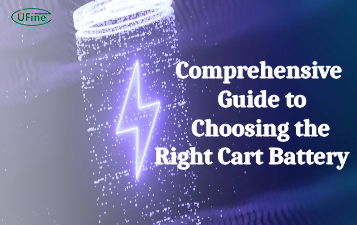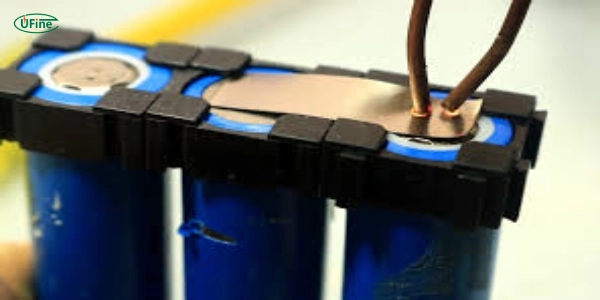Have you ever wondered how to spot-weld lithium batteries? Spot welding is a critical process in making strong and safe lithium batteries. It helps connect battery cells without damaging them. This article will explore how to spot-weld lithium batteries step by step.
Part 1. Understanding the spot welding process for lithium batteries
Basics of Spot Welding
Spot welding is a way to join metal parts together. It uses heat and pressure to create a strong bond. Here are some key points to understand about spot welding:
- Principle: Spot welding works by passing an electric current through metal pieces. The current heats the metal, and pressure is applied to fuse them.
- How It Works: Two electrodes press the metal parts together. The current flows through the electrodes and the metal. The heat from the current melts the metal, and the pressure joins them.
- Why It’s Important: This method is quick and efficient. It creates strong connections without needing extra materials like solder. It’s perfect for making battery packs because it keeps the cells safe.
Equipment Needed for Spot Welding
It would help if you had the right tools to spot-weld lithium batteries. Here are the essential items:
1. Spot Welder: This is the primary tool. It generates the electric current and applies the pressure needed for welding.
- Types: Handheld spot welders are suitable for small jobs. Larger, bench-mounted welders are better for big projects.
- Power Settings: Adjustable power settings help you control the heat and ensure you don’t damage the batteries.
2. Nickel Strips: We use these to connect the battery cells.
- Quality: High-purity nickel strips are best. They conduct electricity well and are strong.
- Size: Choose the right thickness for your battery cells. Thicker strips are more robust but need more power to weld.
3. Safety Gear: Protect yourself while welding.
- Gloves: Wear heat-resistant gloves to protect your hands.
- Goggles: Use safety goggles to protect your eyes from sparks.
- Clothing: Wear long sleeves and avoid synthetic fabrics that can melt.
4. Battery Holders: These keep the battery cells in place while you weld.
- Stability: Make sure the holder is stable and doesn’t move.
- Size: Use holders that fit your specific battery cells.
5. Multimeter: This checks the connections.
- Use: The multimeter ensures solid connections and conducts electricity properly after welding.
Part 2. Preparing for spot welding lithium batteries
Safety Precautions
Before you begin spot welding lithium batteries, it’s crucial to prioritize safety. Here are some essential safety measures:
- Wear Protective Gear: Wear heat-resistant gloves, safety goggles, and non-flammable clothing to protect yourself from heat and sparks.
- Ensure Proper Ventilation: Work in a well-ventilated area to prevent the buildup of harmful fumes from welding.
- Inspect Equipment: Check your spot welder and other tools for damage or defects before use to avoid accidents.
- Keep Fire Extinguisher Nearby: Have a fire extinguisher within reach in emergencies.
- Stay Alert: Avoid distractions and focus on the welding process to prevent accidents.
Preparing the Work Area
Creating the right work environment is essential for successful spot welding. Here’s how to prepare:
- Clean Work Surface: Clear your workbench of clutter or debris to create a clean and organized workspace.
- Avoid Flammable Materials: Remove any flammable materials from the vicinity of your work area to reduce the risk of fire.
- Secure Battery Holders: Ensure that battery holders are stable and securely positioned to prevent movement during welding.
- Position Welding Equipment: Place your spot welder and other tools within easy reach for convenience and efficiency.
Preparing the Lithium Batteries
Proper preparation of lithium batteries is crucial for successful spot welding. Follow these steps:
- Clean Battery Surfaces: Wipe the surfaces of the battery cells with a clean, dry cloth to remove any dirt, oil, or residue that could interfere with the welding process.
- Arrange Battery Cells: Arrange the battery cells in the desired configuration, ensuring they are aligned and spaced adequately for welding.
- Inspect Nickel Strips: Check the nickel strips for defects or damage and ensure they are the correct size and thickness for the battery cells.
- Secure Connections: Double-check that the connections between the battery cells and nickel strips are safe and free from obstructions.
Part 3. Spot welding procedure for lithium batteries
Setting Up the Spot Welder
To ensure successful lithium batteries’ spot welding, properly setting up and calibrating your spot welder is essential. Here’s a guide:
- Power Settings: Adjust the power settings on the spot welder according to the thickness of the nickel strips and the type of battery cells in use.
- Electrode Positioning: Position the electrodes of the spot welder to ensure they make good contact with both the nickel strip and the battery cell.
- Calibration: Calibrate the spot welder according to the manufacturer’s instructions to ensure accurate and consistent welds.
Performing the Spot Welds
You can begin the spot welding process once you set up the welder.
Follow these step-by-step instructions:
- Prepare the Weld Area: Place the prepared lithium batteries in the holder, ensuring they are securely positioned and aligned.
- Position Electrodes: Position the electrodes of the spot welder over the junction of the nickel strip and the battery cell.
- Apply Pressure: Press the electrodes firmly against the nickel strip and battery cell to ensure good contact.
- Activate Welder: Activate the spot welder to apply a brief but intense electrical current to the junction, melting the nickel strip and creating a solid weld.
- Repeat: Repeat the process for each junction between the battery cells and nickel strips, ensuring consistent weld quality.
Inspecting the Welds
After completing the spot welding process, it’s essential to inspect the welds to ensure they are solid and reliable. Here are some techniques for inspection:
- Visual Inspection: Inspect each weld to ensure no signs of incomplete fusion or weak spots.
- Tug Test: Gently tug on the nickel strips to check for any signs of separation from the battery cells.
- Multimeter Test: Use a multimeter to measure the resistance of each weld to ensure it falls within the desired range, indicating a solid connection.
- Reinforcement: If any welds are weak or inadequate, reinforce them by applying additional spot welds.
Part 4. Tips and best practices for spot welding lithium batteries
Choosing the Right Nickel Strips
Selecting the correct nickel strips is crucial for successful spot welding of lithium batteries. Here’s some advice:
- Thickness: Choose nickel strips that are the appropriate thickness for the battery cells. Thicker strips provide more strength but may require higher welding power.
- Width: Ensure the width of the nickel strips matches the size of the battery terminals for optimal contact and conductivity.
- Purity: Use high-purity nickel strips to minimize resistance and ensure efficient energy transfer during welding.
Managing Heat and Pressure
Controlling heat and pressure is essential to prevent damage to the battery cells during spot welding. Follow these tips:
- Adjust Power Settings: Set the spot welder to the appropriate power level based on the thickness of the nickel strips and the type of battery cells.
- Monitor Temperature: Keep an eye on the temperature of the battery cells during welding to prevent overheating. Pause if necessary to allow for cooling.
- Apply Even Pressure: Ensure that pressure is evenly distributed across the electrodes to prevent deformation or puncturing of the battery cells.
Ensuring Consistency and Accuracy
Consistency and accuracy are crucial to producing reliable welds throughout the battery pack. Here are some best practices:
- Maintain Electrode Alignment: Check the alignment of the spot welder electrodes regularly to ensure you correctly position them over the nickel strips and battery cells.
- Standardize Welding Technique: To achieve consistent results, develop and stick to a standardized welding technique throughout the welding process.
- Inspect Weld Quality: Periodically inspect the quality of the welds using visual inspection, tug tests, and multimeter measurements to identify any inconsistencies or defects.
- Practice Proper Welding Sequence: Follow a logical welding sequence, starting from one end of the battery pack and working your way across to ensure you make all connections efficiently and accurately.
Part 5. FAQs
-
How many volts are needed to spot weld?
Typically, spot welding requires around 1 to 3 volts to join metals together effectively. -
Is it safe to solder lithium batteries?
It’s not safe to solder lithium batteries due to the risk of damaging the cells or causing a fire. -
What metals Cannot be spot welded?
Metals with high resistivity, such as stainless steel or titanium, cannot be effectively spot-welded. -
Can I spot-weld different types of lithium batteries together?
Yes, you can spot-weld different types of lithium batteries together. Still, ensuring they have similar specifications and voltage ratings is essential. -
Can I spot-weld lithium batteries without a spot welder?
While you can join lithium batteries using alternative methods like soldering or adhesive bonding, many prefer spot welding for solid and reliable connections. -
How can I prevent overheating of lithium batteries during spot welding?
To prevent overheating lithium batteries during spot welding, closely monitor the temperature, use appropriate power settings on the spot welder, and ensure even pressure is applied to distribute heat evenly.
Related Tags:
More Articles

Comprehensive Guide to Choosing the Right Cart Battery
Choosing the right cart battery ensures optimal performance and longevity. This guide covers cart battery types and helps you make an informed choice.
The Ultimate Guide to 18650 Button Top Battery
18650 button top batteries are popular for their high energy density and reliability. This guide covers their key features, usage, and maintenance tips.
The Power of Slim: Unveiling the Potential of Flat Lithium Ion Battery
Flat lithium-ion batteries power devices from phones to vehicles. This article explores their design, benefits, types, applications, charging, and safety.
The Comprehensive Guide to Battery Balancing and Battery Balancer
Battery balancing and balancers optimize performance, longevity, and safety. This guide covers techniques and tips for choosing the right balancer.
10 Key Facts About Drone Battery for 2024
Uncover crucial insights with "10 Key Facts About Drone Battery for 2024." Learn the latest trends and essential details on drone batteries.




